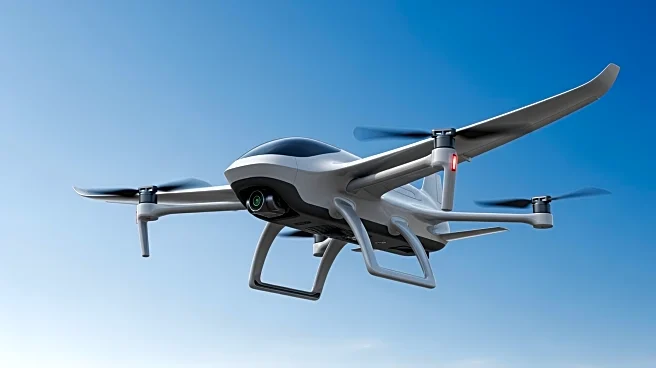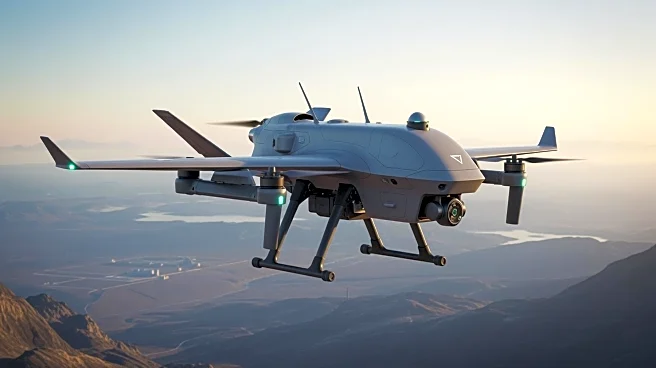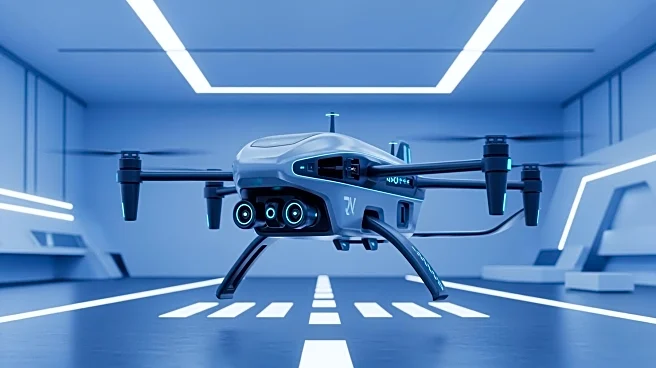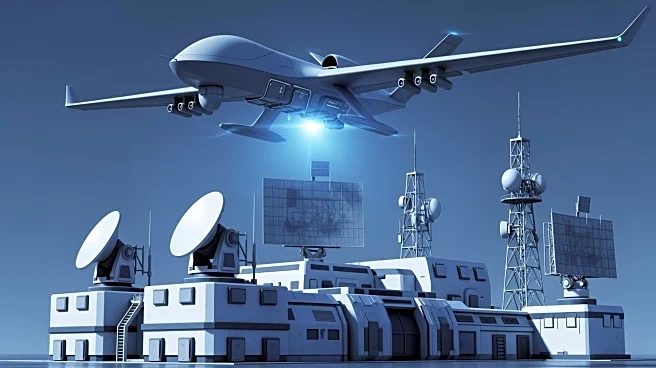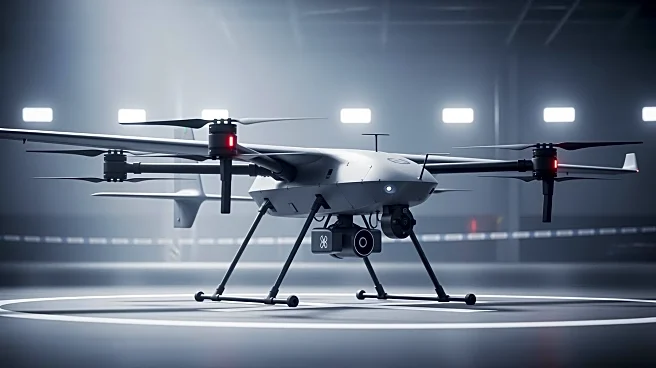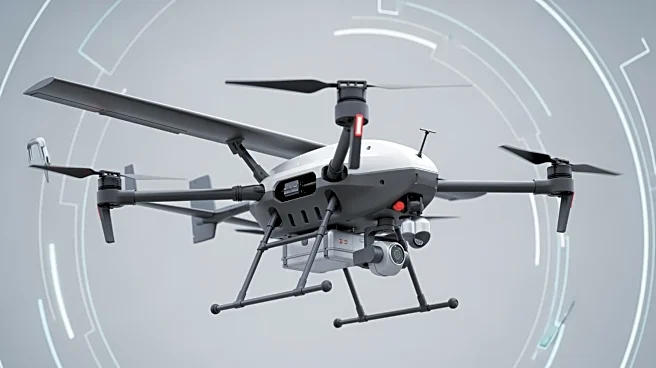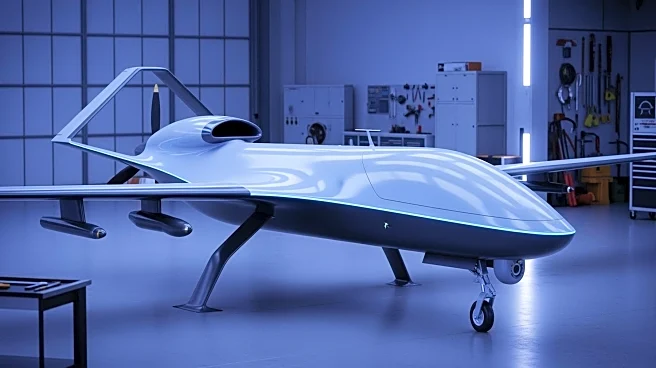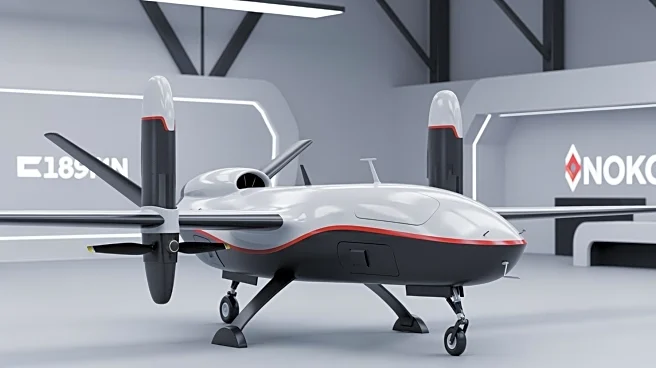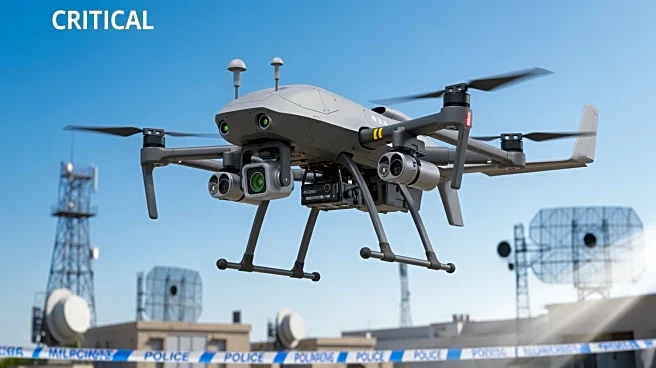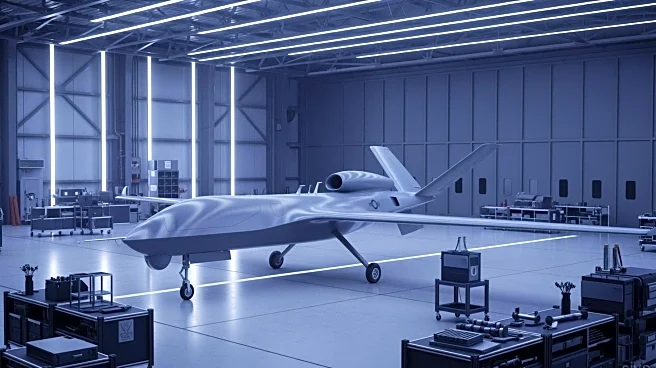What's Happening?
UAVOS has announced the successful demonstration of its S1-V300 Medium Altitude Long Endurance (MALE) Unmanned Aircraft System (UAS), which showcased significant endurance and fuel efficiency during a recent
test flight. The S1-V300, weighing 1,000 kilograms, flew continuously for 16 hours at a cruising speed of 130 km/h, covering a distance of 2,400 kilometers while consuming only 10 liters of fuel per hour. With a total fuel capacity of 500 liters, the aircraft can operate non-stop for over 40 hours, carrying a payload of 30 to 40 kilograms. The aircraft's performance is attributed to its optimized aerodynamic design and engineering innovations, including a high-aspect-ratio wing, advanced wing mechanization, and a lightweight composite landing gear.
Why It's Important?
The successful test of the S1-V300 UAS marks a significant advancement in unmanned aerial technology, particularly in terms of endurance and fuel efficiency. This development is crucial for industries relying on long-range commercial, security, and Intelligence, Surveillance, and Reconnaissance (ISR) missions. The enhanced capabilities of the S1-V300 could lead to more cost-effective and efficient operations in these sectors, potentially reducing operational costs and increasing the scope of unmanned missions. The integration of advanced communication systems and autonomous operation capabilities further positions the S1-V300 as a versatile tool for various applications.
What's Next?
Following the successful demonstration, UAVOS is likely to focus on further refining the S1-V300's capabilities and exploring potential commercial applications. The company may engage with stakeholders in the defense, security, and commercial sectors to deploy the UAS in real-world scenarios. Additionally, UAVOS might continue to innovate in UAS technology, aiming to enhance the performance and versatility of its unmanned platforms.
Beyond the Headlines
The advancements in the S1-V300's design highlight the growing importance of aerodynamic efficiency and fuel economy in unmanned systems. This trend could influence future UAS designs, emphasizing sustainability and operational efficiency. The success of the S1-V300 may also prompt regulatory bodies to consider new guidelines for the deployment of long-endurance UAS in civilian airspace, balancing innovation with safety and privacy concerns.
